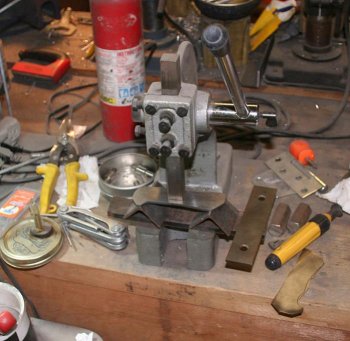Doug Lester
Well-Known Member
I went to a knife show yesterday and took along a few knifes that I made. Got to talk to a couple of other knife smiths, one who lives about a half hour away from me. A little taken aback that they weren't quite as impressed with my knives as I was but I did get some good advice and that's what I drove six hours round trip to get. Time to crank my knife making up a notch.
The biggest problem that I have is in heat treating. I have a tendancy to warp the blades. I'm deffinantly getting the blades too hot and probably not heated evenly. I'm thinking about putting a piece of black pipe that I have into the gas forge and heating inside of it. These blades, the ones that were warped were edge quenched. I was also wondering if that might have contributed to the warpage. What are the feeling of edge quenching vs. full quench?
All in all, I'm glad that I went got some good suggestions, such as not trying to forge the blade as close to finish and got some pointers on how to possibly salvage the warped blades. I'm going to have to use something like a straight edge for right now to check straightness; I don't appear to have quite the eye to check visually.
Doug Lester
The biggest problem that I have is in heat treating. I have a tendancy to warp the blades. I'm deffinantly getting the blades too hot and probably not heated evenly. I'm thinking about putting a piece of black pipe that I have into the gas forge and heating inside of it. These blades, the ones that were warped were edge quenched. I was also wondering if that might have contributed to the warpage. What are the feeling of edge quenching vs. full quench?
All in all, I'm glad that I went got some good suggestions, such as not trying to forge the blade as close to finish and got some pointers on how to possibly salvage the warped blades. I'm going to have to use something like a straight edge for right now to check straightness; I don't appear to have quite the eye to check visually.
Doug Lester


